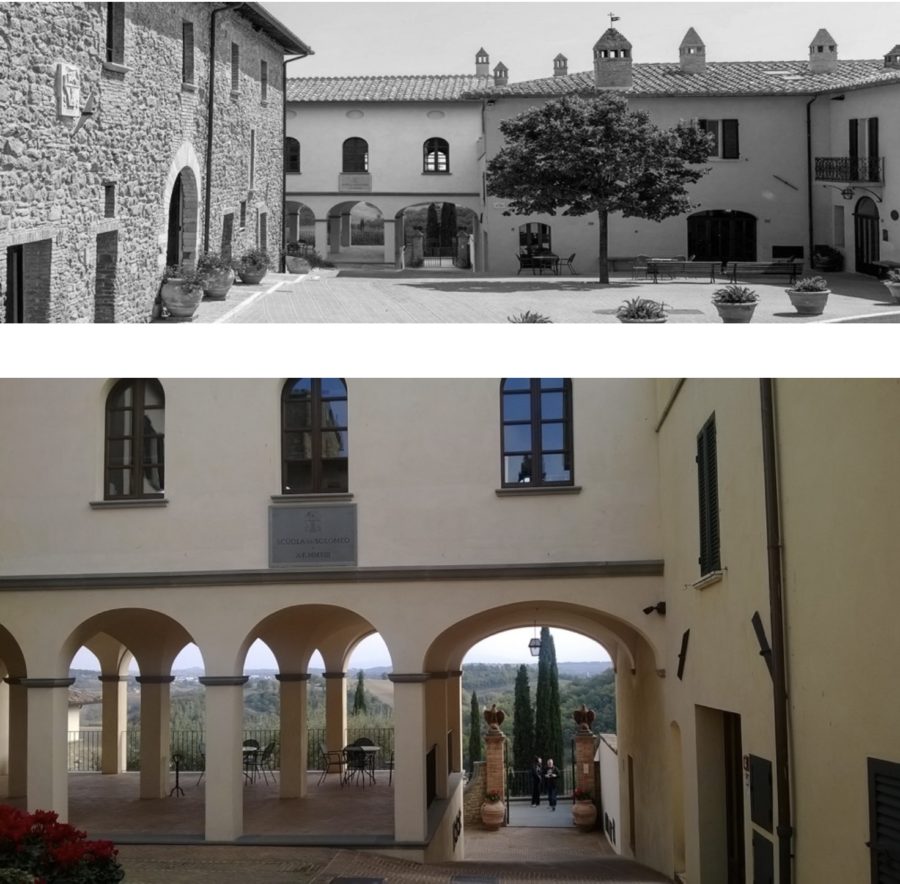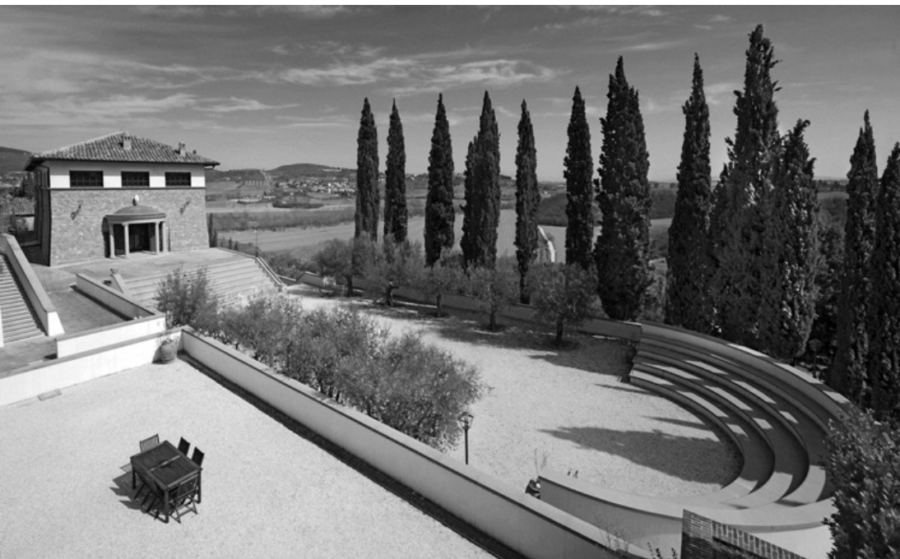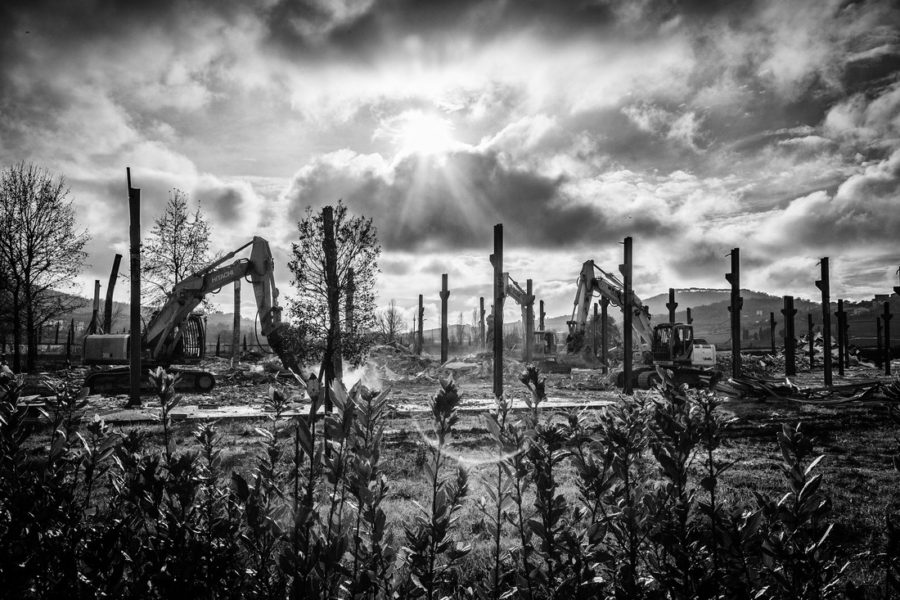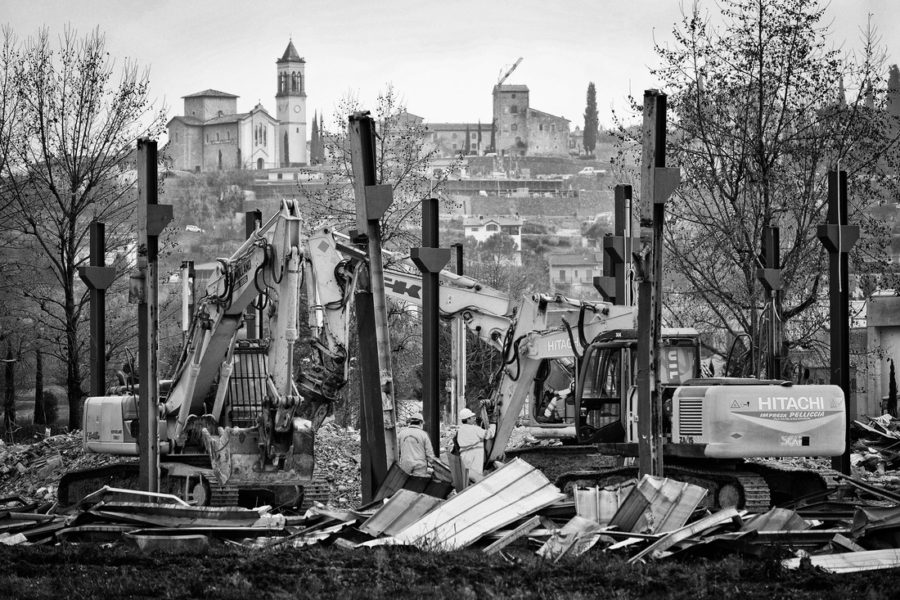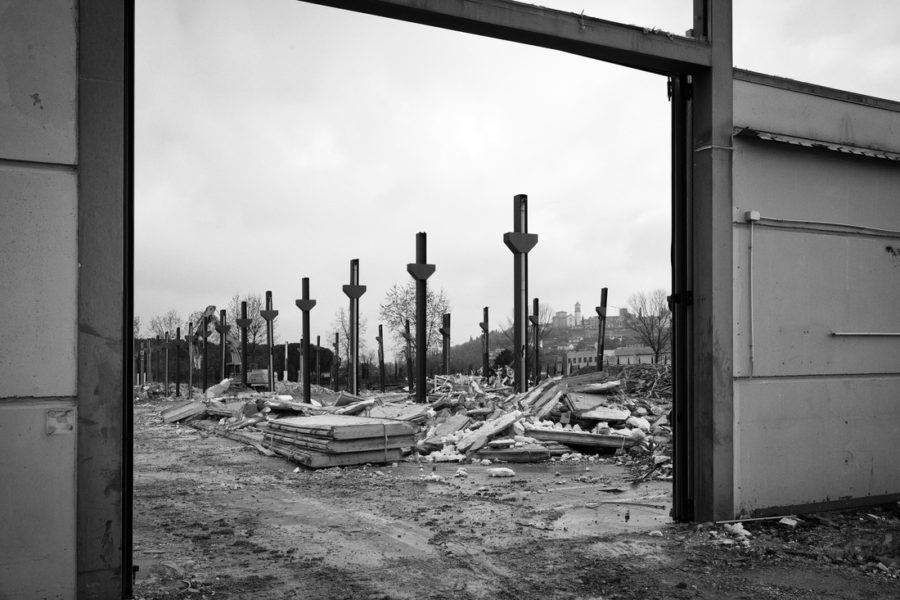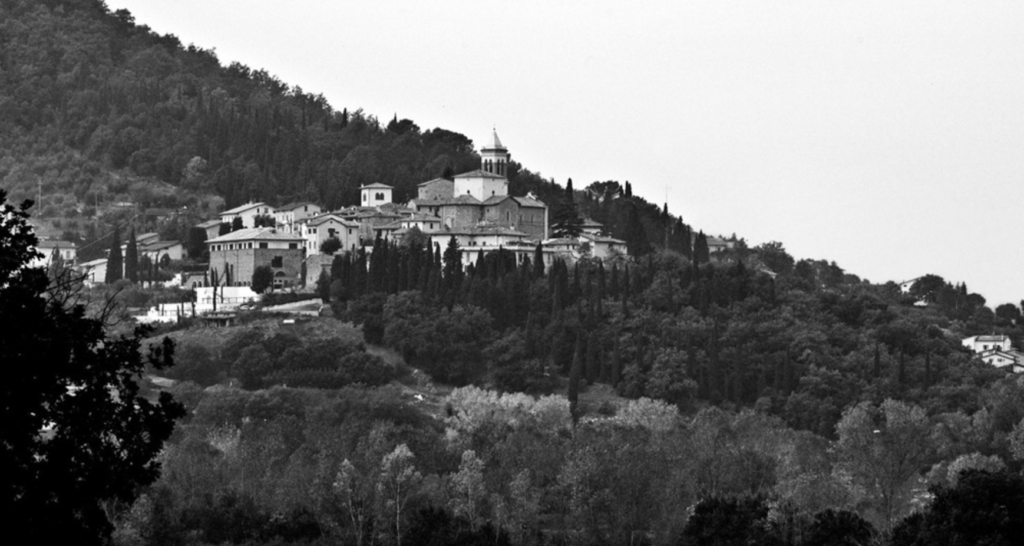
Brunello Cucinelli[1], born in 1953 in Castiglione del Lago (Perugia, Umbria), is one of the great Italians that wrote and are still writing the better history of this nation; he is so because of his business success and for his way of looking at life and community that engages him in the building of a moral enterprise that puts at its centre the Man and the area where he lives and works[2].
Creator and cox of the famous fashion griffe named after him, Brunello Cucinelli, to the olympic motto citius, altius, fortius (faster, higher, stronger) – a summa of the competition culture – seems to prefer the enlightened way of the words of Alexander Langer (Vipiteno 1946 – Firenze 1995): lentius, profondius, dulcius (slower, deeper, sweeter)[3].
Cucinelli, sensitive enthusiast of philosophical thinking[4], is an extraordinary exponent – in many aspects unique – of that ecology of production that Richard Sennett (Chicago 1943) recounted in The Craftsman (2008). Working well for ourselves and for the community; following the necessary timing for doing good; collaborating and building a community to create social wellness, productive eccellence and economical sustenance: these are the pillars that since 1978 have supported the vision of Brunello Cucinelli and that the high eminence of Richard Sennett explored also in Together: The Rituals, Pleasures, and Politics of Cooperation (2012).
The Umbrian businessman often quotes the positive influence that, at the beginning of his adventure, had the thoughts on brand identity endorsed by Theodore Levitt. For Cucinelli, the final product is borne out of the cultural and identity vision of the company community. Following the famous platonic proposition: «it is not the woodworker thata makes the spool that can say if it is a good spool, but the weaver that uses it» (Plato, Cratylus, 390 b.). The firm has legitimized the ethical committment of Cucinelli towards Man, society and ecology, but it also represented a personal emancipation from a difficult social context[5].
In the same way, Cucinelli remembers often the taunting he suffered as a youth, while he moved with his family to the regional county seat and where he was seen as foreigner (thus a stranger), even if he was born a few miles away from there. As we have already seen, Cucinelli went back to his beloved rural context after a little while, and in the little burg he is reverd as the family member that leads a successful life: a friend, generous, amiable, always present in the community to which he gives a great part of his profits. By using personal capital, or through the funds of Fondazione Brunello Cucinelli, more than 20% of business incomes go back to humanity.
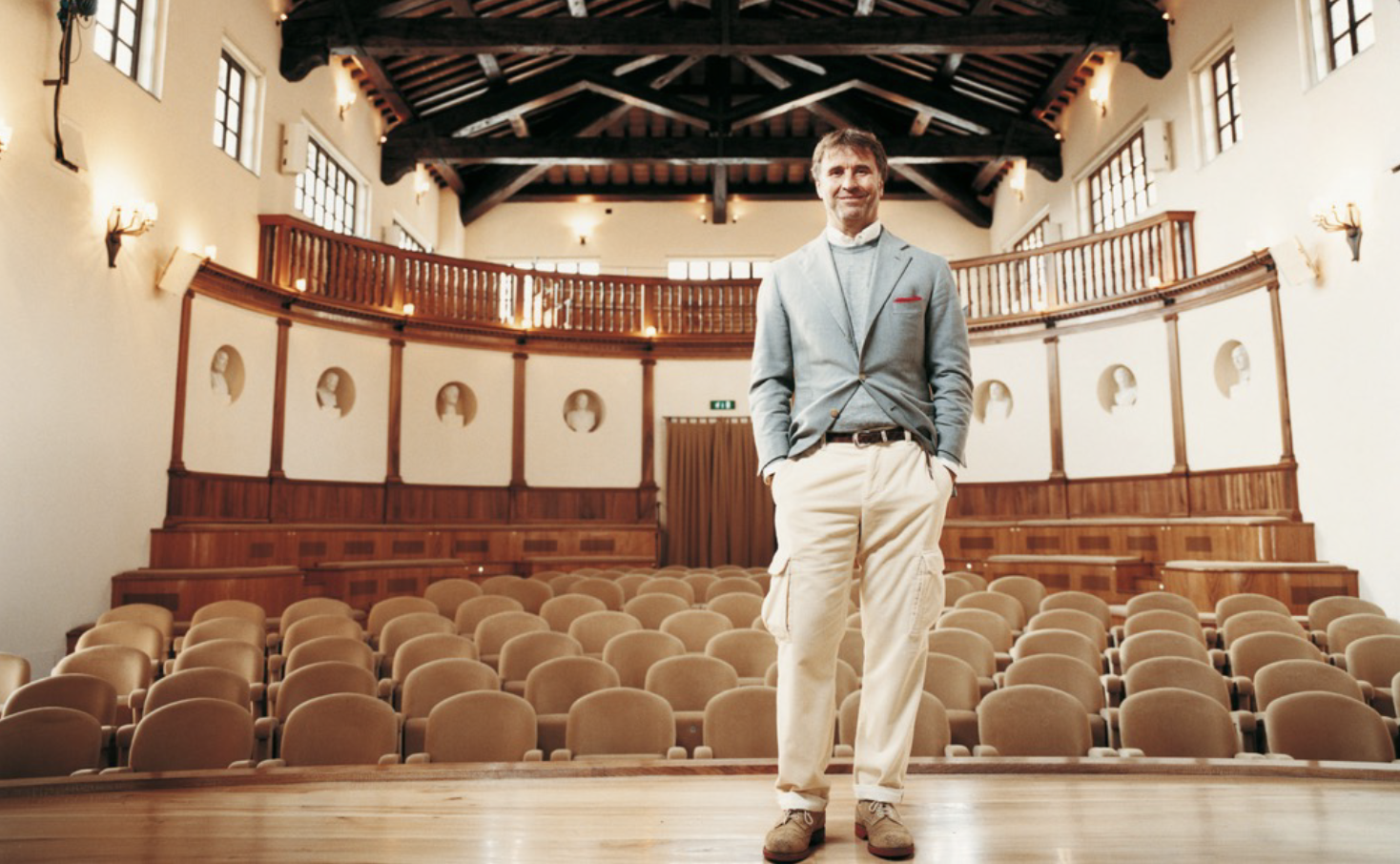
Brunello Cucinelli is an authentical and sensitive moral heir of the corporate social responsibility and of the corporate citizenship designed by Adriano Olivetti (Ivrea 1901 – Aigle 1960): a revolutionary and visionary innovator in the industrial politics, in the working well-being, and in the symbiotic dialogue between business, society and territory[6]. As the sociologist Luciano Gallino (Torino 1927-2015), one of the young intellectuals then progatonists of the Office for the Study on Social Relation Olivetti, the thinkery of Adriano, writes: «A business that, when deciding industrial and financial strategies, takes the labour condition offered to its employees into maximum consideration, is socially responsible»[7].
As already observed by some pioneers in the study of work and social relation – like Hugo Munsterberg, Elton Mayo, Gunther Anders, Georges Friedmann – in Solomeo, the collaboratin between the firm and the workers is not an imposed and unilateral choice, but a shared one: it is founded on the pleasure of doing things together, and doing them right. Cucinelli is in tune with the thoughts that Sherry Turkle (New York 1948) dedicated to the social risks of digital era, in her valuable book: Alone Together: Why We Expect More from Technology and Less from Each Other (2011). To the personal responsibility of his collaborators, Cucinelli entrusts the respect of the chosen methods for eco-saving; Brunello is deeply hostile to the very concept of wastefulness, be it of energetic, personal or social resources.
For Brunello Cucinelli, the knowledge and the talents of his collaborators, the capital of relationships that the business community builds in its inside, the social capital fecundate by the dialogue between the firm, the territory and its international interlocutors, are the genetic assets and nourishment of his humanistic enterprise. The qualitative research that we developed through interviews to Cucinelli’s collaborators, occupied with various professional tasks and with different years of work experience, outlined the success and the unanimous sharing of Brunello (as he is fondly and familiarly called by his collaborators) project. The personal and collective pride of the workers in feeling protagonists of a positive experience of personal, company and territorial growth is well-established and motivating. The sense of personal and social responsibiliy towards the business and colleagues is very deep.
Since time immemorial, Cucinelli embraces a nonconformist and rare choice in the fashion world: to provide a product exclusively made in Italy. It is something acknoweldged and highly valued also by his collaborators (and not only by his loyal customers). An interviewee pointed out: «Even the cotton thread for sewing the garments is italian. Nowadays, everybody uses foreing-made threads, but Brunello really cares about Italian quality, even for the details, and he is right».
Valuabe, for a business that keeps employing young people (now preponderant), is the generational dialogue, both in the important choices and the small details that helps experiencing a better job and the firm community. In this business, those who have a higher expertise cover the natural role of educators, trainers and motivators so to support the path of sharing that underlies the enterprise philosophy and its productive procedures.
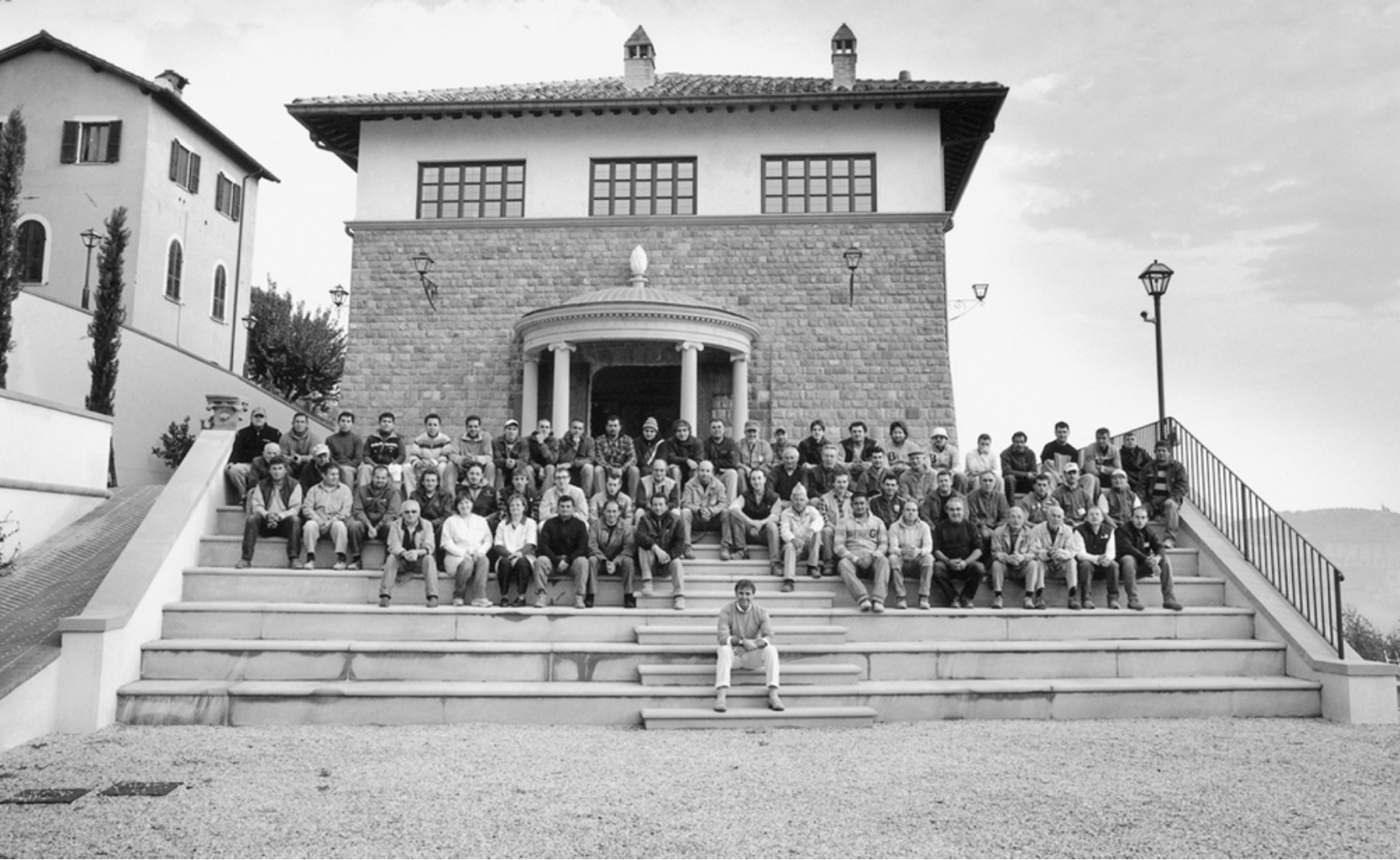
In 37 years of business life, control systems to monitorate the entrances and the working hours have never been employed, thus leaving to the single and group responsibility the respect of the work hours and of the established work rules. With the right stimula, obviously: the owner comes very early to the factory and he is the first rigorously respecting the rules that he himself suggests. Cucinelli lives on his skin, every day, the responsibility in ensuring a future and well being to his collaborators, and he is constantly engaged in this direction, at the same time he is exacting and resolute in demanding respect toward the business choices.
The eight hundred and more workers’ salary is 25% higher, on average, than the salary of their colleagues in other business in the same field, and in a context such as the Italian one, where the gradual loss of buying power of salaries is extremely serious, the direct benefits for the economy of the area are clear. At the end of 2012, the year of price on the Milan Stock Exchange, Brunello Cucinelli has distributed a family gift from their personal assets[8]: $ 6 million profit his 783 employees (each received about $ 7,000). From the words of interviewee: «The business award made us feel more and more part of this shared project».
In Solomeo, digital resources are an important tool for fostering the effective and direct interaction between few people. For what the use of email is concerned, the rule is not to put more than 3 recipients and not to use email after the offices’ closing time.
Together with the workers in the Solomeo’s factory, there are more than 1500 artisans (80% in Umbria) that work thrid party for this griffe, in a network of family run laboratories or microenterprises, amplifying the indirect, healthy effects to the economy of the territories.
***
The journey to the sweet, well exposed hill, made fruitful and rich by the light, on which the Solomeo burg flourished, helps understanding the ancient etimology of the name of this medieval castle which evokes an ancient sun worship. Solomeo crowns a bucolic plain protected by evergreen forests, lapped by the waters of the stream Caina, and offers a brightening vision of picturesque villages that scatter magnificence across Italy and Umbria in particular; places of the spirit, where people live with the nature, the landscape, the spirit of history and of beauty.
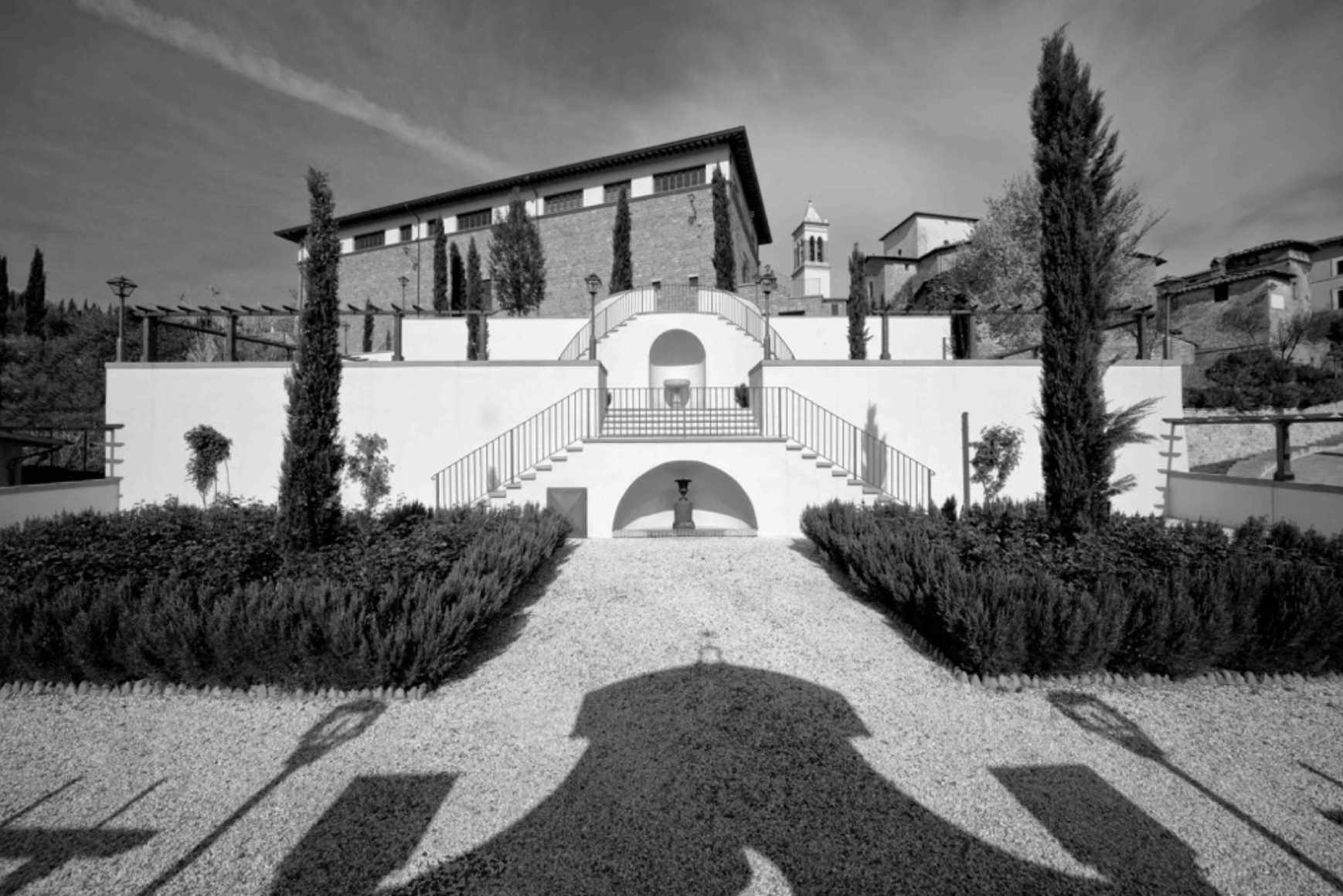
The urban physiognomy of Solomeo is traditional: on the top of the hill, during the Middle Ages, were built a castle protected by walls, the church of San Bartolomeo, a few houses, and some buildings of service for the life of the small farming community. In another area of the burg, not far from the castle, during the Sixteenth century, was built a noble suburban villa with an adjoining park. During the Nineteenth and Twentieth centuries, however, the slopes of the hill have been populated by an incoherent series of homes, many of which need to be redeveloped.
In the second half of Nineteenth century, the castle lost a good part of its historical inhabitants, as happened to a great number of italian rural burgs that have been deserted or nearly so. This tendency has been reversed by the obstinate and ahead of its time committment of Brunello Cucinelli, who devoted his life to «giving back dignity to the earth».
In 1985 he bought the castle’s buildings where, at the time, only a family lived, and moved there the offices and laboratories of his textile company. During this thirty years, in the ancient heart of Solomeo, where Federica Benda, Brunello’s wife, was born, have come to live fifteen family units. Solomeo is the site, the symbol and the soul of this firm, publicly-traded in Milan, and half of the five hundreds inhabitants of this burg works for Brunello Cucinelli in the production, renovation, and decorum of the burg, or in the philantropic and cultural projects that this humanist-businessman looks after to and supports in first person.
Cucinelli says that he feels as the guardian of this little ancient burg, not its owner; surely he is the sensitive host of this welcoming garden of the soul that is Solomeo, taken care of by the lives, the emotions and dreams of those who live and work there, or those who are lucky enough to visit it and be enchanted by it[9].
As Alexander Langer wrote: «The focus of this ecological conversion is the becoming conscious that, while between men there are reciprocal relations and correspondences between rights and duties, with regard to the next generations and nature there are only duties. While in every form of debts, for example financial debt, there is always an attempt to push back the reimbursement, the debt with nature cannot wait».
Still, walking through Solomeo, distracted only by the toll of the church bells, one still breaths an ancient and peaceful silence; a monastic and sweet stillness that harmonizes with the conversations of youths and oldmen alike that meet in the piazzetta, small piazza, across from the social club of the burg: «Solomeo is as warm as a cashmere sweater», said Brunello with an incisive metaphor.
During these thirty years, Cucinelli funded the restoration of the church and of all castle’s buildings, while the patrician villa has become Brunello’s abode. Fostering inhabitants social relations, piazzas have been redeveloped or created, and together with them, other spaces used for refreshments or for socio-cultural enjoyment.
The burg’s park has been recovered and other green areas are being realized. Solomeo is constantly evolving, changing and growing, ruled by the rythm of the seasons and by the love of its patron towards this burg of which he personally looks after every detail. When in Solomeo, Cucinelli usually visits the burg and his possessions at dawn, together with the master builder, to look at and direct the development of the renewal projects. Particularly fascinating, is the functional evolution happened in Solomeo in the last five years, when the firm had to re-think its historical spaces to qualify the organizing wellness of its collaborators and the increased manufacturing needs.
For over twenty years, even the productive core of the firm has been operational inside the castle of Solomeo, and Cucinelli’s collaborators have worked in medieval spaces, with stone walls, cotto tiled floors, visible girders, fragments of frescoes, and wooden furniture. In the old granary, there was the shipping department; the laundry was in the old cellar; the knitwear factory was in the ex school and the shop was in the herbs stockroom; the old oil mill had been turned into the spacious and comfortable staff restaurant.
Since 2012, the tale of this compelling business story has moved to the slopes of Solomeo’s hill, where Cucinelli built a big and modern manufacturing plant. With this project, Cucinelli retied the threads of present time to the weave of an extraordinary cultural, architectural and industrial history: the transfer of Olivetti’s works of Ivrea, from the historical red building to the new factory (built from 1934 to 1940), designed by Adriano Olivetti and young architects Luigi Figini (Milano 1903 – 1984) e Gino Pollini (Rovereto 1903 – Milano 1991), revolving around the idea of Man and his conversation with the light[10]. With this factory, the brilliant humanist businessman Olivetti would project italian industry and architecture right into the dialogue with the best lesson of the Staatliches Bauhaus, of Le Corbusier (Charles-Edouard Jeanneret-Gris, La Chaux-de-Fonds 1887 – Roccabruna 1965) and with the study about illuminating engineering and of industrial and organizational psyschology, then just developed at the National Academy of Sciences and by Elton George Mayo (Adelaide 1880 – 1949)[11].
Cucinelli thought of a factory and of offices without breaks, wrapped up in natural light, resorting greatly to zenihtal illumination and big windows that project the interiors into the sorrounding countryside, making e the workers feel the well-being of working in the nature, and ideally marrying the production times with those of the ecosystem. The architectural structure and the colours of the building, ligth earth and green, gently lay down the factory within the landscape and converse amiably with the dominant colour of Solomeo’s castle, in a reciprocal relation. The ancient burg, after being restored, shows a uniform tone and recalls the rural atmospheres described in the Umbrian landscapes painted by Elihu Vedder (New York 1836 – Roma 1923).
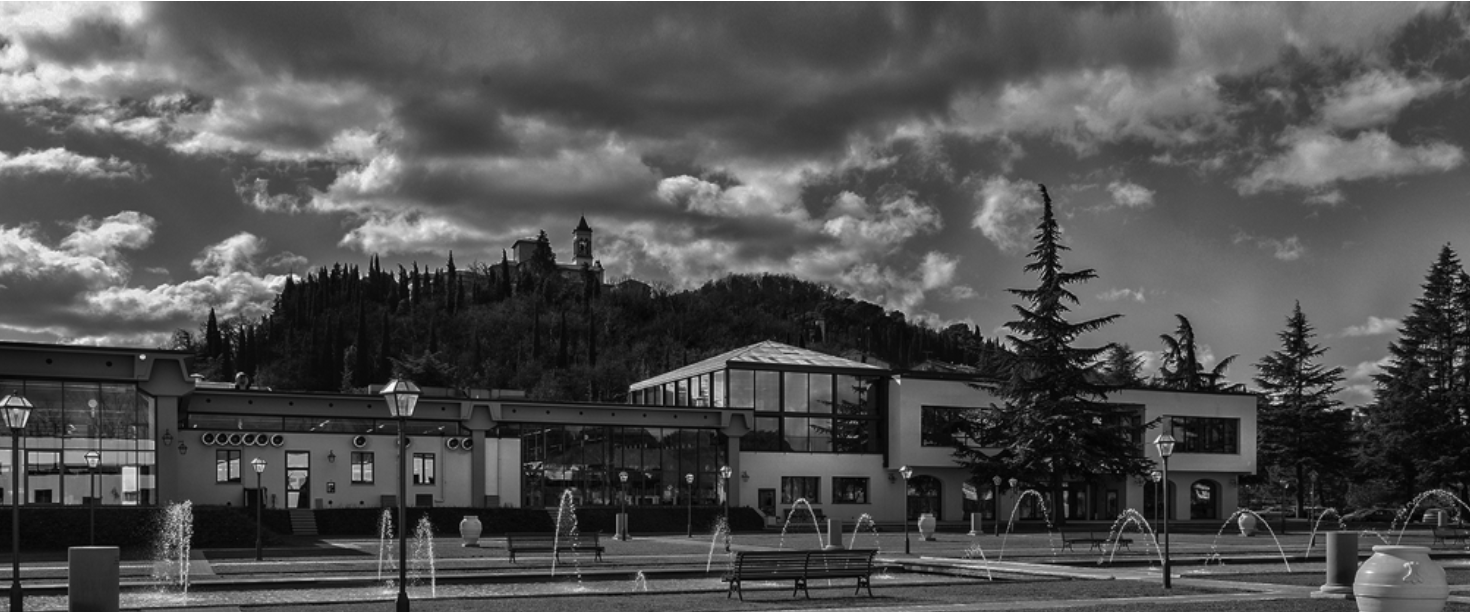
The new factory is a project of rationalism style, shaped like a U placed around a big internal garden (almost a baroque parterre), here a delicate water symphony accompanies the works. The heart of this bussiness community, together with the parks and the gardens, is the factory restaurant building. Designed to accomodate 400 table companions, the restaurant is structured in two interlinked glazed halls, so there is a visual continuity between the two groups. A sensible attention has been given to the topic of noise pollution, so the conviviality of this large group of people would not produce bothersome noises during the important moment of the lunch. In Solomeo, in the factory restaurant (Brunello does not like the word cafeteria) food quality is extremely high, rigorously Kilometre Zero. Workers eat together and activities stop for 90 minutes (from 1.00pm to 2.30pm). From interviews, it emerges the awareness that every detail is studied to foster workers’ wellbeing: «Brunello wanted to use furniture materials that would absorb the sound; in this way, even if we are many, the volume of the speaking voices does not get annoying».
The most fascinating aspect of this environment is its style, that Cucinelli has thought in an ideal continuity with the old restaurant of the Solomeo’s castle. We are not anymore in a strictly historical context, but that feeling of warm welcome has remained unchanged: light coloured wood, tables, chairs and furniture designed following the tradition of the rural Umbrian furniture. Unexpected are the two fireplaces that recall an ancient intimacy and sociality, in addition to naturally warming up the rooms in winter.
There is no gym for the collaborators, because Brunello Cucinelli prefers nurturing the conviviliaty of a slow meal and the sociability of a conversation during a stroll in the factory’s park. The long times of lunch break allow for the development of relationships, and this is positively valued by the workers. Next to the restaurant, actually, Cucinelli is building a nursery, to allow young mothers to spend the time of the break with their children.
The transfer of the factory to the slopes of Solomeo, as we have already addressed, did not deprived the business’ core of its crucial role. In Solomeo castle there is still the shop where customers from the surrounding areas or turists can buy Cucinelli’s fashion; there are still some design studios, but most importantly, in the burg has been established Solomeo’s School of Arts and Crafts (Scuola di Arti e Mestieri di Solomeo).
The textile laboratories of the castle have been turned by Cucinelli in just as many classrooms-laboratories where the young (or the not so young) can be educated, or reskilled, through the education to the traditional and natural Arts and crafts. Gardening, preservation of nature and agricolture, brickwork and stone work, textile arts crats (sewing, mending, mending a ladder in), dance, theatre, singing, figurative arts. The plaques next to the doors of the building tell about the discipline held in the classroom-laboratory, as if time created an ideal union between a modern university campus and a Renaissance academy. Some of the students of the school will find a job in Cucinelli’s business, but their mentor states that it will be reason of great pleasure for him to see the success of this artists-artisans in other part of the Country or abroad, because their mission is to keep the great creative and manufactoring Italian tradition going.
Solomeo’s old town centre has assumed, more now than in the past, the role of meeting and exchange place between the business community, those who live in the area and all those that come to Solomeo for work reasons, cultural and environmental pleasure, or vocational education. The number of tourists, attracted by the beauty of the place and of the landscape, by Brunello’s personal history and by his products, is steadily growing[12]. We talked about the church, the shop, the school, the piazzas, the parks and the places of social conviviality, but, since 2008, Solomeo is the location of a theatre with 240 seats that today is a very important cultural institution.
Cucinelli has thought and designed this theatre as a condensation of the architectural and scenographical culture of different theatres: the Olimpico in Sabbioneta, the Farnese in Parma and the Olimpico in Vicenza. In the cavea, the busts of the great thinkers of antiquity, are the tutelary deities of the rich theatre, concert and dance seasons organized by the Fondazione Brunello Cucinelli. At the end of the performances, the audience is invited in the library, site of the Neohumanistic Academy (Accademia Neoumanistica), a research facility on humanity founded by Cucinelli, to keep enjoying conviviality and sociality[13].
To this invitation, Cucinelli replied at the end of 2014, disclosing his new, thrilling project: “to give Solomeo’s vally its landscape back”. The businessman has lived each of his architectural commitment paying special attention to the importance of landscape, to colours’ harmony, to the balanced relation between buildings and greenery. The new factory itself has been oriented in a way that is only partially visible from Solomeo’s belvedere, so the gaze of those who are looking down the valley, searching relief for the soul through the vision of beauty, does not become weary.
Unfortunately, even Solomeo’s valley, has suffered the same fate of many italian rural realities, and has been scattered with a great numebr of factories thought with an eye dismissive of the harmony of the shapes, styles, colours and volumes. This florilegium of highly ecologically and landscape clashing industrial and crafts buildings, has been the subject of Cucinelli’s intervention; he managed, with great commitment and persistence, to buy all the acreages in the valley, convincing the owner of these factories to move their business. The demolition of these buildings has already started, and when it will be over, Solomeo’s valley will be a green plain returned to agricolture.
In the same way, helped by the important landscape architect Massimo de Vico Fallani, Cucinelli has pointed his beauty focus also toward the hill across Solomeo: there, he planted an olive tree grove and a vineyard, being especially sensible and attentive, for the latter, to the most ancient – and most respectful of the symbiotic dialogue between the grape vine and the earth – planting arts (traditional in rural Umbrian agricolture). Extraordinary is also the project that foresees the building of a cellar, proteced inside the hill, and quite sensible is the commitment in the philological restoration of the farmhouses that adorn the hill across Solomeo.
When this impressive work of landscape architecture will be complete, Solomeo’s valley will look as a rural Eden, where nature and rural landscape interact with the historical presence of Man, with the historical traces of the farmhouses and the burg’s buildings. But the commitment towards Man and his land is absolutely not over, because Cucinelli’s dream is to redevelop the houses of patchy style that have been built on the slopes of Solomeo’s hill.
In an area alredy cleared of factories, it is in advanced state of construction also a sports centre and another park, with adjoining buildings for the community life of a new school, this time dedicated to the youngest. The Fondazione Brunello Cucinelli has chosen to call this project Laical Contemporary Oratory (Oratorio Contemporaneo Laico). A place for aggregation, thought for children aged 6 to 12, where to find again the peacefulness of living and growing together in a natural and well looked after environment, where young people can spend a good part of their afternoon between sports and recreation, sharing the same ideals of beauty, respect, dignity, humanity, tolerance. This sports centre, in addition to young people of the area, will host international and multiethnic campuses where will be invited also children coming from troubled countries, thus gathering together different cultures that may also be having difficult relations, so to grow up together in a peaceful and serene atmosphere, typical of the first part of our life.
To give back importance to history; to welcome Man and his work in beauty and lifting his spirit through the Arts and cultural reflection; to give back dignity to labour and to ancient crafts, to think with the hands; to engage in ensuring a job built around Man and his dignity; to rethink the landscape because it’d become the tale of the ecosystem and of the beauty of the areas; to put agricolture at the centre of the sustainable development of the rural areas; to welcome, to educate, to support the growth of the body, the soul and of the sense of community of the young protagonists of the future: a future of hope and positive human energies, to whom Cucinelli’s vision – a concrete, non utopian vision – has given shape in the fruitful dialogue between Man and built environment.
The message, even relating to the architectural and environmental project, reaches out and is widely shared. The words of one of the women interviewed are very meaningful: «Brunello does everything he can to make both the firm and the area sourrounding it beautiful, both because he likes beauty and because working in a nice environment elates the soul, makes us feel more peaceful and makes us work better. He is always saying this, and I am totally convinced about it […] He put the fountain here precisely for us, for us to see it from the windows while we work». It is not out of place to think about Solomeo as a laical monastery: a community that lives on humanity, sharing, and rules. Such a metaphor is extremely fitting, as Saint Benedict (Norcia 480 – 547), founder of Western monasticism, was born in Umbria: «I believe in a new form of capitalism that would connect soul and labour. As Saint Benedict said, try to be sweet and strict»[14].
As always happens in monasteries, Cucinelli bestows a great value on lunch, lived as a moment of psycho-emotional relief for the person engaged in labour, and not just as a mere fulfillment of nutritional needs. In Umbria, where Saint Francis (Assisi, 1181-1226) was born: «the first and essential ecological message that can be given out is simply of leading a simple life, a life that consumes little, a life that would have the utmost respect for everything we come across to, including animals, plants, stones, the landscapes, basically everything that has been lended to us and that we have to give to others».This is Brunello’s mission and the community vision of Solomeo.
Bibliography
Bonifazio, Patrizia. 2002. Olivetti costruisce. Architettura moderna a Ivrea [Olivetti builds. Modern Architecture in Ivrea]. Milan: Skira.
Clément, Gilles. 1999, Le jardin planetarie [The global garden]. Paris: Albin Michel.
Dagenais, Danielle. 2004. “The garden of movement: ecological rhetoric in support of gardening practice”, Studies in the History of Gardens and Designed Landscapes 24 (4): 313–340.
De Vico Fallani, Massimo, ed. 2011. Brunello Cucinelli. A Humanistic Enterprise in the World of Industry. Perugia: Quattroemme.
Eder, Klaus. 1996. The Social Construction of Nature: A Sociology of Ecological Enlightenment, London: Sage.
Friedman, Vanessa. 2013. “Pranzo with the FT: Brunello Cucinelli”, The Financial Times. www.ft.com/cms/s/2/803af5ca-2afc-11e3-8fb8-00144feab7de.html.
Gallino, Luciano. 2001. L’impresa responsabile. Un’intervista su Adriano Olivetti [The responsible company. Interview on Adriano Olivetti]. Torino: Edizioni di Comunità.
Gandy, Matthew. 2013. “Entropy by design: Gilles Clément, Parc Henri Matisse and the Limits to Avant-garde Urbanism”, International Journal of Urban and Regional Research 37: 259–278.
Kidner, David W. 2000. “Fabricating nature: a critique of the social construction of nature”, Environmental Ethics, 22(4): 339– 57.
Hannigan, John. 2006. Environmental Sociology (second edition). London: Routledge.
Higgs, Eric. 2003. Nature by design: people, natural process, and ecological restoration. Cambridge: The MIT Press.
Irwin, Alan. 2001. Sociology and the Environment.Cambridge: Polity Press.
Langer, Alexander. 2005a. Una vita più semplice, Biografia e parole di Alexander Langer [A simpler life, biography and words of Alexander Langer]. Milan: Terre di mezzo editore/Altreconomia.
Langer, Alexander. 2005b. Il viaggiatore leggero. Scritti 1961-1995 [The light traveler. Writings 1961-1995]. Palermo: Sellerio.
LaRocca, David. 2014. “Brunello Cucinelli: A Humanistic Approach to Luxury, Philanthropy, and Stewardship”, Journal of Religion and Business Ethics 3. http://via.library.depaul.edu/jrbe/vol3/iss1/9.
Lauree honoris causa 2006-2010. Lectiones doctorales: Korolos Papoullas, Rita Levi Montalcini, Domenico Maffei, Patrick P. DeLuca, Edgar Reitz, Augustin Luna Serrano, Jacques Diouf, George Alexander Patterson, Mohamed ElBaradei, Brunello Cucinelli. Perugia: Università degli Studi di Perugia.
Lockie, Stewart. 2004. Social nature: the environmental challenge to mainstream social theory, in White R. (ed.). Controversies in Environmental Sociology. Cambridge: Cambridge University Press.
Lockie Steward, Sonnenfeld, David, and Fisher, Dana. 2014. Socio-ecological transformations and the social sciences. in Routledge International Handbook of Social and Environmental Change. London and New York: Routledge, pp. 1-12.
Mead, Rebecca. 2010. “The Prince of Solomeo The cashmere utopia of Brunello Cucinelli”, The New Yorker Magazine. http://www.newyorker.com/magazine/2010/03/29/the-prince-of-solomeo.
Mol, Arthur, Spaargaren, Gert, and Sonnenfeld, David. 2014. Ecological Modernization Theory: Where Do We Stand? in Ökologische Modernisierung: Zur Geschichte und Gegenwart eines Konzepts in Umweltpolitik und Sozialwissenschaften, Bemmann M, Metzger B. and von Detten R. eds. Frankfurt and New York: Campus Verlag.
Sennet, Richard. 2008. The Craftsman. London: Allen Lane/Penguin Press.
Sennet, Richard. 2012. Together: The Rituals, Pleasures, and Politics of Cooperation. New Haven: Yale University Press.
Sutton, Philip. 2004. Nature, Environment and Society. Basingstoke: Palgrave Macmillan.
Telesiene, Audrone, ed. 2016. Green European: Environmental Behaviour and Attitudes in Europe in a Historical and Cross-Cultural Comparative Perspective. London: Routledge.
Turkle, Sherry. 2011. Alone Together: Why We Expect More from Technology and Less from Each Other. New York: Basic Books.
Zevi, Luca ed. 2012. The Four Seasons of Italian architecture, from Adriano Olivetti to a Green Economy. Milan: Electa.
Whitehead, Mark. 2009. “The wood for the trees: ordinary environmental injustice and the everyday right to urban nature”, International Journal of Urban and Regional Research 33 (3): 662–681.
[1] Cucinelli told his vision of enterprise, society and environment in the volume: De Vico Fallani 2011. Brunello has lived his early years in the Umbrian borg of Castel Rigone. Brunello founded the company that bears his name in 1978. The Brunello Cucinelli is one of the leading companies in the world in the production of high-quality cashmere clothing. His company listed on the Milan Stock Exchange has a market capitalization of approximately $ 1.5 billion. The Brunello Cucinelli exports its luxury products in over 60 countries worldwide and employs more than 800 workers. Among the major awards in his career remember: Honorary degree in philosophy and ethics in human relations (University of Perugia, 2010), Lauree honoris causa. 2011; Knight of Labour of the Italian Republic (form 2010); Andrea Pininfarina Award for Excellence (2010); Leonardo Award “Quality Italian” (2010). To learn about the activities and corporate philanthropic and cultural Fondazione Brunello Cucinelli refer to: www.brunellocucinelli.com.
[2] LaRocca 2014. David LaRocca PhD (www.davidlarocca.org) is the author and director of the documentary film Brunello Cucinelli A New Philosophy of Clothes (2013), founding by a grant of The Moving Picture Institute of New York.
[3] Alexander Langer was a politician, a journalist, a teacher, an intellectual of the last century who devoted his reflection to the topics of peace, coexistence between peoples and environment. Langer 2005a; Langer 2005b.
[4] Cucinelli’s first philosophical inspiration was Kant, whom he discovered when he was twenty-one: «Kant said, “There are only two things that really move me: the starry sky above me, and the moral law within me”» Quote from: Mead 2010. We recommend reading this long article, to learn about many aspects of the thought of Brunello Cucinelli, which will be discussed in this essay.
[5] Essays useful to know the contemporary debate on the issues of society, environment, ecology, and human and economic development, with particular reference to the dialogue between urban and rural contexts: Elder 1996; Kidner 2000; Irwin 2001; Lockie 2004; Sutton 2004; Hannigan 2006; Lockie, Sonnenfeld, and Fisher 2014. Mol, Spaargaren and Sonnenfeld, 2014; Telesiene 2016.
[6] Since 1962, the Adriano Olivetti Foundation, was established on the initiative of some family members, friends and associates in order to collect and develop civic engagement, social and cultural development and to ensure the continuation the activities for the reform of Italy’s society: www.fondazioneadrianolivetti.it. Adriano Olivetti in 1946 he founded the publishing house Edizioni di Comunità, which now issues will republish the works with new critical editions: www.edizionidicomunita.it.
[7] Gallino 2001. Luciano Gallino was the director of the Department of Sociological Research and Studies on the organization at Olivetti, from 1961 to 1970. Among other important Italian intellectuals who collaborated with the firm humanistic Olivetti remember: Franco Ferrarotti, Franco Fortini, Libero Bigiaretti, Ottiero Ottieri, Paolo Volponi.
[8] Cucinelli: «This is intended as a family gift, something that goes beyond the company that is listed on the Stock Exchange».
[9] The work on the rural landscape and natural Cucinelli, has much in common with the philosophical and cultural work of the famous architect, theorist and scholar of landscape and garden Gilles Clément (Argenton sur Creuse 1943). Clément 1999; Dagenais 2004; Whitehead 2009; Gandy 2013.
[10] Bonifazio 2002; Zevi 2012.
[11] Martin 2005; Bodei 2014.
[12] Higgs 2003.
[13] The same walk in Solomeo is already an invitation to personal introspection, stimulated by the many ceramic and stone epigraphs, placed next to the entrances or on the façades of the buildings, where the sentences of famous thinkers, chosen by Cucinelli to tell the community of Solomeo and invite the visitors to act for humanity, are inscribed.
[14] To understand the approach of Cucinelli to food and rural traditions, we recommend reading: Friedman 2013.
Marta Picchio, PhD Assistant and adjunct professor on General Sociology at the University of Perugia. His research is interested on some classical authors of sociological thought (Beck, Elias, Marshall, Simmel, Weber), the sociology of citizenship and of foreigner, the local development, the environmental sociology and the human rights – marta.picchio@unipg.it

